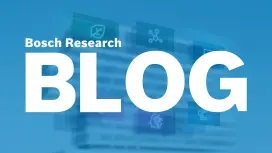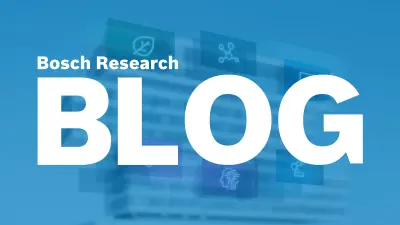First workshop on Common Sense Knowledge Graphs
Bosch Research Blog | Post by Alessandro Oltramari, 2021-01-14

As a growing number of Bosch products and services are endowed with AI, it is important to focus on approaches that can augment machine intelligence with human-like reasoning. The workshop on Common Sense Knowledge Graphs, to be held on February 8, 2021, in conjunction with the Thirty-Fifth AAAI Conference on Artificial Intelligence, offers an opportunity for scientists and practitioners to discuss research on how to replicate common sense in artificial systems.
People share a considerable body of knowledge derived from everyday experience
A signature characteristic of human intelligence, which we describe as “common sense”, manifests itself in language and behavior, remaining largely in the background. For instance, when describing the picture on this page, nobody would state that a real elephant is walking on the floor, since big pachyderms don’t typically inhabit living rooms (exceptions may occur). To give another example, no one would willingly leave the windows of their home open during a thunderstorm, anticipating that heavy rain might ruin furniture or cause a short circuit if electrical equipment is exposed. Commonsense knowledge is key in disambiguating context, and in keeping information exchange effective and efficient.

Common sense AI? What is routine for humans is often challenging for AI systems
In a famous paper, the authors demonstrate that the presence of an elephant figurine in a living room perturbates the visual classification of objects that are normally found in such an environment, like a sofa or a TV. The authors found this phenomenon to be broad: Given an image dataset, object detection generally becomes unstable when an image that contains a trained object is inserted in a sub-region of another image.
Among the explanations provided in the article, the lack of contextual reasoning – which is tied to common sense – is considered crucial. Quite comparable limitations occur across AI fields: Powerful neural models like GPT-3 can generate sentences with impressive human-like mastery of natural language, and yet the silly mistakes they still make sometimes reveal a substantial absence of common sense.
Endowing machines with common sense is a necessary step towards human-like intelligence
At the dawn of AI research, manually encoding commonsense facts using knowledge representation languages seemed, at first, a promising strategy; but over time, it became clear that the expressivity of computational logics had to be combined with scalable methods of automatic knowledge acquisition to allow for knowledge bases of human-like common sense to be built.
Thanks to recent breakthroughs in computing architecture, neuro-symbolic approaches that integrate deep learning algorithms with knowledge graphs have emerged, making the tradeoff between expressivity and scalability possible. Such hybrid methods are driving a renovated interest (and investments!) in machine common sense, as initiatives like the homonymous DARPA program attest. But while this “renaissance” is generating measurable progress at fast pace, replicating common sense at the machine level remains one of the most challenging problems in AI.
An opportunity to discuss hybrid-AI approaches to machine common sense
The upcoming workshop on Common Sense Knowledge Graphs, to be held on February 8, 2021, in conjunction with the Thirty-Fifth AAAI Conference on Artificial Intelligence, is an opportunity for scientists and practitioners to (virtually) gather and discuss research on Common Sense Knowledge Graphs. When Deborah McGuinness, Filip Ilievsky, Pedro Szekely and I started to write the proposal for this workshop, we decided that expanding the topics of interest beyond knowledge graphs was crucial: In fact, as mentioned above, it is mainly within the framework of hybrid AI that progress in machine common sense can be made.
Accordingly, the workshop’s call for papers focuses on Common Sense Knowledge Graphs that are expected to contribute to a wide range of downstream tasks, such as question answering, robot navigation and manipulation and scene understanding. The choice of invited speakers follows the same philosophy: In various areas and with different methods, Yejin Choi, Joshua Tenenbaum, David Ferrucci, Shih-Fu Chang, Łukasz Kaiser, and Tony Veale study machine common sense “in action”, and not just in terms of knowledge features.
Replicating common sense at the machine level remains one of the most challenging problems in AI.
The topic of machine common sense is important for a company like Bosch. Our motto is “Invented for Life”, and as modern life demands increasingly intelligent products and services, spanning from smart home solutions to Industry 4.0, developing AI systems that are closer to human-like reasoning becomes critical.
What are your thoughts on this topic?
Please feel free to share them via LinkedIn or ResearchGate or to contact me directly.
Author: Alessandro Oltramari
Alessandro works on knowledge-based intelligent systems. His primary interest is to investigate how semantic resources such as computational ontologies and lexical databases can be used to augment learning algorithms and help machines to make sense of the world. He strives to make progress in explainable AI, which he’s convinced can be achieved only by designing systems that integrate human-accessible machine representations with neural networks.






